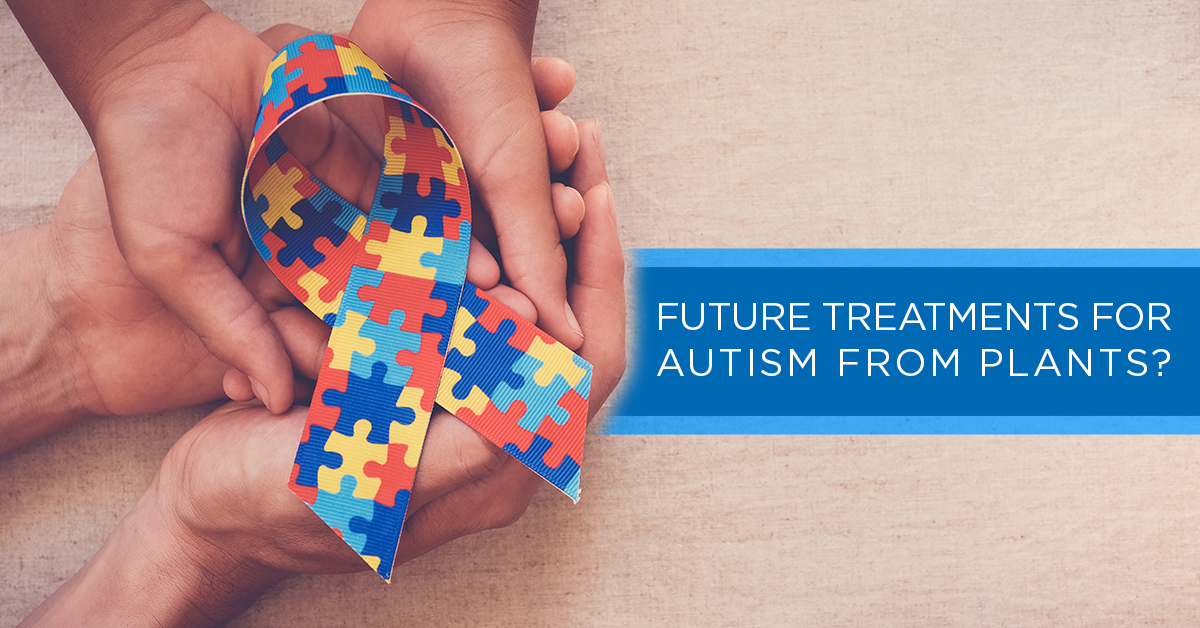Future Treatment for Autism from Plants?

A recent study by Gao and Matsumoto in the Journal of Ethnopharmacology (S0378-8741(18)34424-6) reported significant reduction in Autism Spectrum Disorder (ASD)-like behaviors in mice treated with Kami-shoyo-san (KSS), a traditional Japanese herbal medicine.
ASD includes a range of neurodevelopmental disorders where affected individuals are often hyper-sensitive to sensory stimuli, have problems with social interaction, and exhibit restricted, repetitive patterns of behavior. ASD deficits are present in early childhood, often leading to clinically significant functional impairment. Animal models of ASD indicate the clinical symptoms found in patients are closely linked to dysfunction of normal excitatory / inhibitory effects of GABAergic signaling. Addressing imbalances in this signaling pathway is an attractive therapeutic target for treating ASD.
KSS, a traditional Japanese herbal medicine, has been shown to be an effective treatment of vasomotor instability and the adverse psychological symptoms associated with hormone replacement therapy. Previous reports have described a broad range of pharmacological actions on pharmacologically relevant targets including modulation of GABA receptor signaling.
The authors’ previous studies have shown that decreases in positive allosteric GABAA receptor modulators, like allopregnanolone (ALLO), induce ASD-like symptoms in male mice, including impaired sociability-related performance and increased repetitive self-grooming behavior. Treatment of these affected mice with KSS significantly ameliorated ASD-like behavioral abnormalities via GABAA receptor- and dopamine D1 receptor-mediated mechanisms. The current study examined whether ASD-like behaviors were dependent on ALLO levels and if induction of ASD-like behaviors by ovary dissection (OVX) was ameliorated by KSS.
Here, ovariectomized mice were treated with KSS before starting a panel of behavioral tests intended to measure ASD-like behavior. Sociability, anxiety-like behavior, and self-grooming behavior were analyzed. The ALLO content in the brain was measured with Arbor Assays Allopregnanolone EIA Kit (K061-H) after each behavioral experiment. CREB- and CaMKIIa-mediated neuro-signaling pathways in the prefrontal cortex and striatum were further examined via Western blotting.
OVX-induced social anxiety-related behaviors were accompanied by a decrease of brain ALLO levels and impairment of CREB- and CaMKIIa-mediated neuro-signaling in the prefrontal cortex. Brain ALLO levels were not affected by KSS administration, but the OVX-induced ASD-like behavioral and neurochemical changes via facilitation of GABAA receptor and dopamine D1 receptor-mediated neurotransmission were still reduced. Despite the decrease in gonadal hormone-derived ALLO correlating with ASD-like behaviors in female mice, the results of this study indicate KSS may be a promising ASD treatment for females and warrants further consideration.
